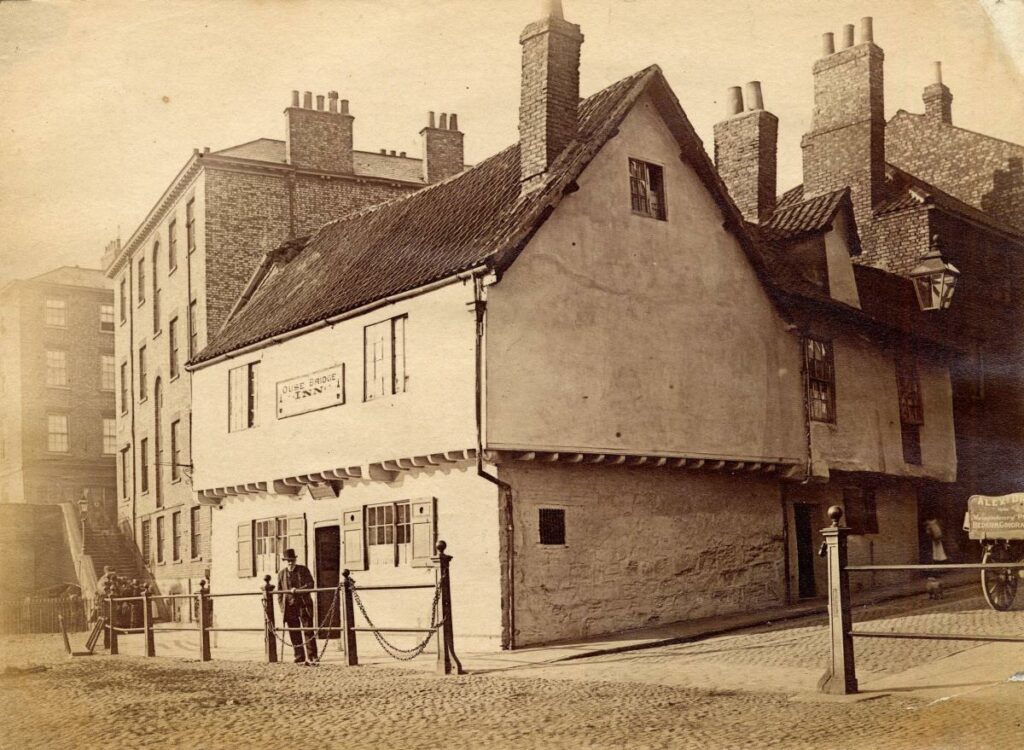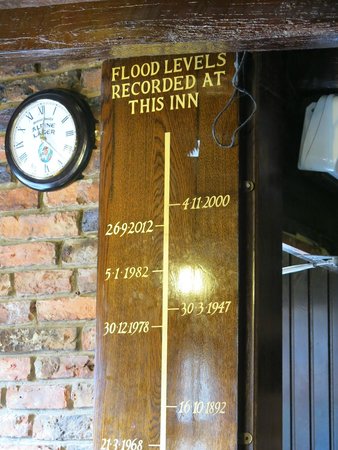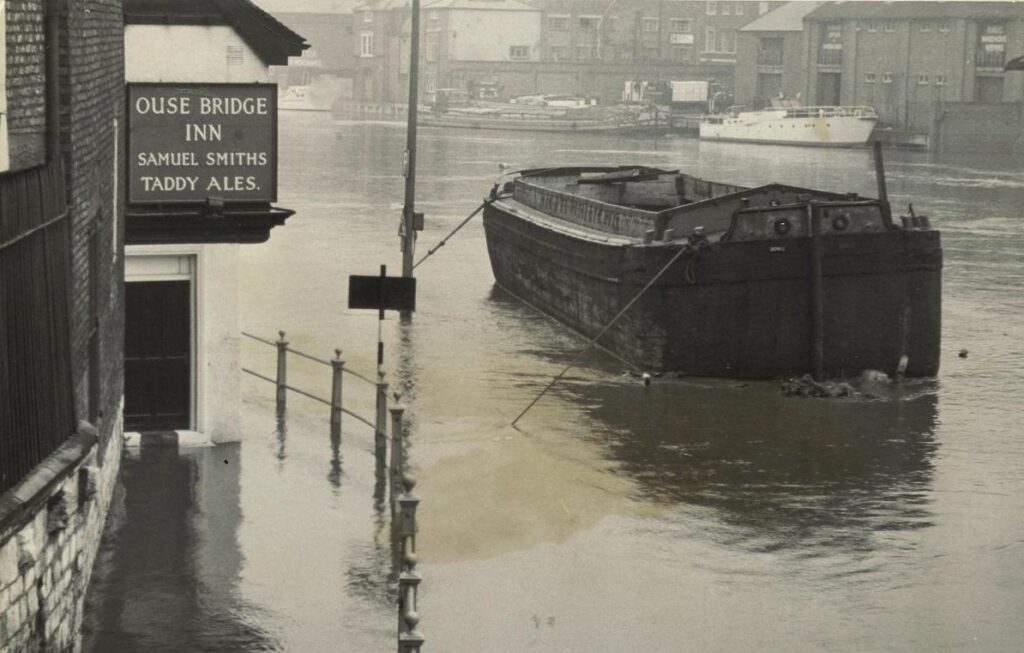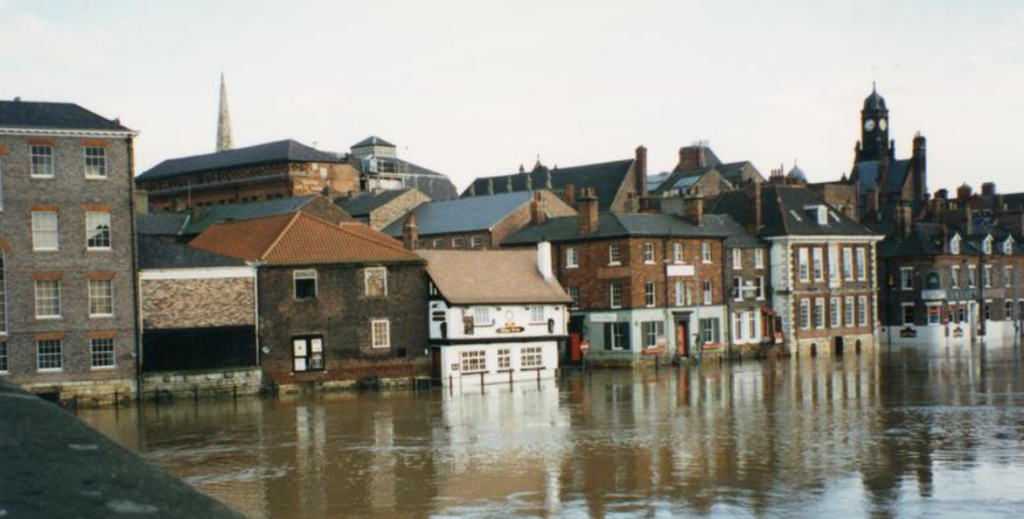Address: 3 King’s Staith, York, YO1 9SN (now The Kings Arms pub)
Description
A window containing 6 glass panels reads “Smoke Room” on the far left lower panel, “Ouse Bridge Inn” on the centre, and “Smoke Room” again on the far right.
The lower right panel has been smashed, but remains readable. The text is decorated with the York crest and botanical borders.
History
This building is the last remnant of First Water Lane, a medieval street that was demolished during a slum clearance program in 1852 and subsequently rebuilt as King Street.
A sign on the building reads “King Street (formerly Kergate)” to honor the original medieval name of First Water Lane.
Constructed in the early 17th century, the building’s upper floor, as well as the north and east walls, are timber-framed.
The south and west walls are constructed from thick brick and stone—some reused from medieval structures—to withstand flooding.

1880s – This image shows the old Ouse Bridge Inn sign, which unlike the frosted glass, hasn’t survived to the present day. Source: Explore York Images. Asset ID: 1001816
By 1795, the building had become the “Kings Arms” pub, but in 1867, it was renamed the “Ouse Bridge Inn,” reflecting its proximity to Ouse Bridge.
In 1898, it came under the ownership of Samuel Smith Old Brewery, who renovated it, adding new doors and windows and completely rebuilding the rear wing.
This is likely when the iconic frosted glass ghost sign, still visible today, was added.
The “Kings Arms” name was reinstated in 1973, and the pub was designated as a Grade II listed building in 1983.
The pub floods an average of four times a year, so it follows a rigorus flood protocol. A flood gate was installed across the front door, and customers are served in the back bar.
A chart on the wall displays historic flood heights, with the most severe in 2000, when the floodwaters nearly touched the bar’s ceiling.
According to legend, this building was once used to lay out the bodies of executed criminals before they were hanged on Ouse Bridge.
In ancient times, when a small prison was located on the bridge, the building’s cellar served as a temporary resting place for those who had been executed there.
Got thoughts or a story to share about this iconic sign? We’re all ears—drop your comments below and join the conversation!






